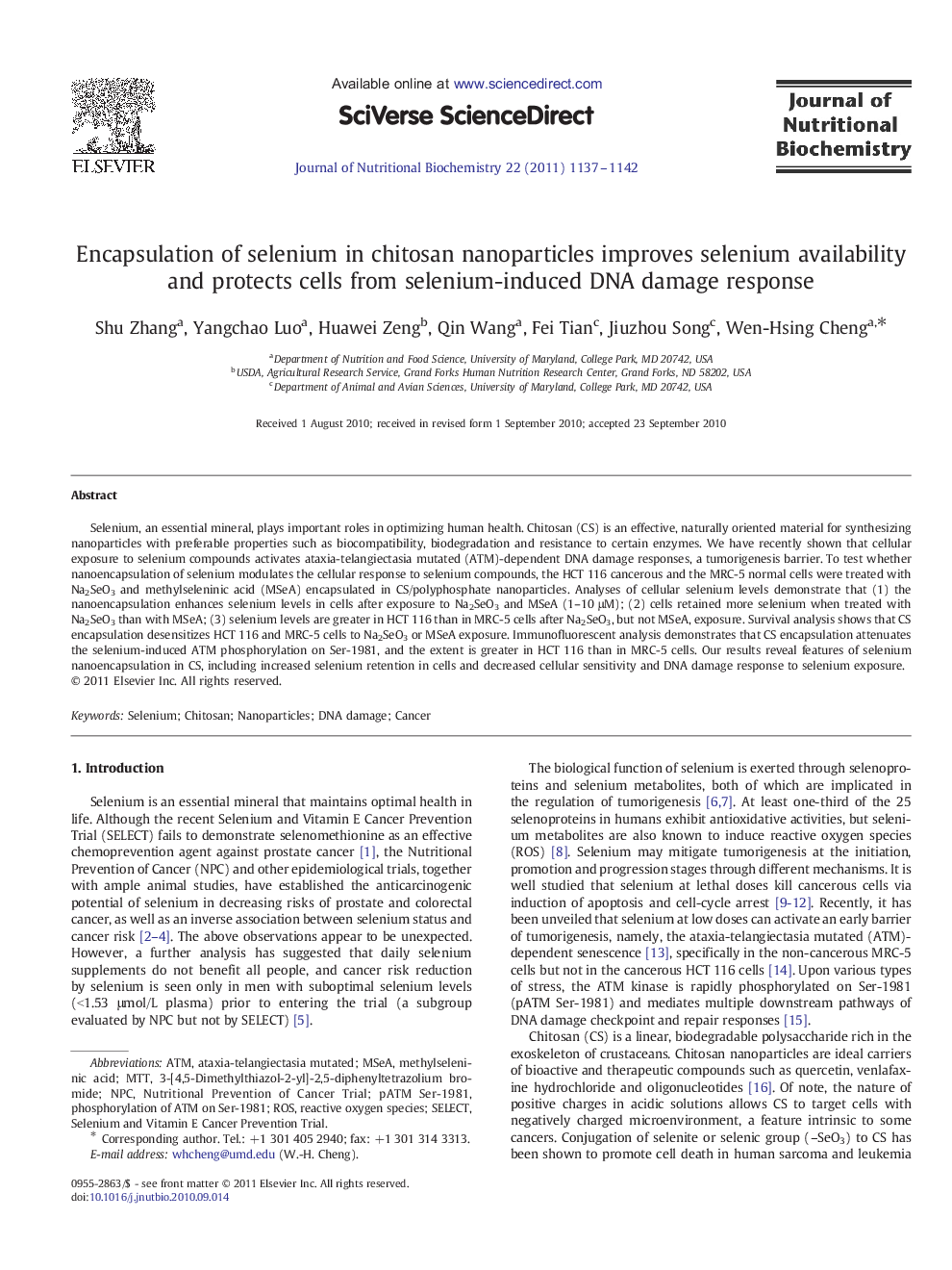| Article ID | Journal | Published Year | Pages | File Type |
|---|---|---|---|---|
| 1990022 | The Journal of Nutritional Biochemistry | 2011 | 6 Pages |
Selenium, an essential mineral, plays important roles in optimizing human health. Chitosan (CS) is an effective, naturally oriented material for synthesizing nanoparticles with preferable properties such as biocompatibility, biodegradation and resistance to certain enzymes. We have recently shown that cellular exposure to selenium compounds activates ataxia-telangiectasia mutated (ATM)-dependent DNA damage responses, a tumorigenesis barrier. To test whether nanoencapsulation of selenium modulates the cellular response to selenium compounds, the HCT 116 cancerous and the MRC-5 normal cells were treated with Na2SeO3 and methylseleninic acid (MSeA) encapsulated in CS/polyphosphate nanoparticles. Analyses of cellular selenium levels demonstrate that (1) the nanoencapsulation enhances selenium levels in cells after exposure to Na2SeO3 and MSeA (1–10 μM); (2) cells retained more selenium when treated with Na2SeO3 than with MSeA; (3) selenium levels are greater in HCT 116 than in MRC-5 cells after Na2SeO3, but not MSeA, exposure. Survival analysis shows that CS encapsulation desensitizes HCT 116 and MRC-5 cells to Na2SeO3 or MSeA exposure. Immunofluorescent analysis demonstrates that CS encapsulation attenuates the selenium-induced ATM phosphorylation on Ser-1981, and the extent is greater in HCT 116 than in MRC-5 cells. Our results reveal features of selenium nanoencapsulation in CS, including increased selenium retention in cells and decreased cellular sensitivity and DNA damage response to selenium exposure.
